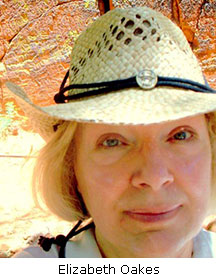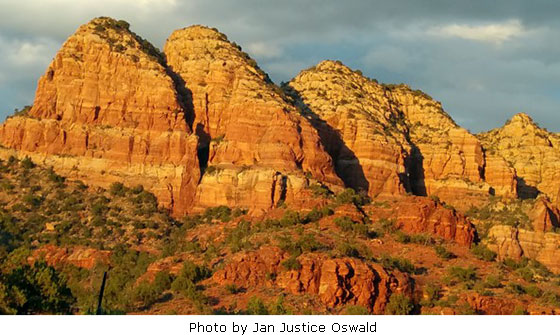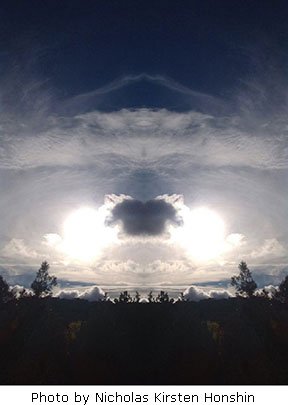Sedona Lit is a series by Dr. Elizabeth Oakes, an award winning poet and former Shakespeare professor. A Sedonian of three years, she will highlight the literature, written or performed, of Sedona, past and present.
 By Elizabeth Oakes
By Elizabeth Oakes
(September 5, 2016)
Poets need community. Few want to hide their poems away in a drawer, no matter how painful it is to stand before an audience. Even the reclusive Emily Dickinson, who didn’t leave her home after age thirty, published several poems in her lifetime and sent others to a leading scholar. In one of her nearly 1800 poems, she said that sharing is essential:
A word is dead
When it is said,
Some say.
I say it just
Begins to live
That day.
Poetry is instinctive. As a child, we loved the fun of rhyme, and still do. That’s why songs rhyme. As adults we use simile and metaphor, two stocks in trade of the poet, for instance, in cliches, which might be called folk poetry. For instance, if we say, “I’m as hungry as a bear,” that’s a simile. If someone says, “He/She’s my rock,” that’s a metaphor. Both describe the world through the imagination.
 Poets have been around as long as language. Sanskrit, the oldest of the Indo-European languages, from which English is derived, has a word for poet: “kāvi,” meaning “maker.” Poetry and stories were oral (like slam poetry today) for millenia, so who knows what was lost.
Poets have been around as long as language. Sanskrit, the oldest of the Indo-European languages, from which English is derived, has a word for poet: “kāvi,” meaning “maker.” Poetry and stories were oral (like slam poetry today) for millenia, so who knows what was lost.
The roots of words themselves may come from the very core of the universe. Sanskrit is thought to “be the language of nature herself, composed of the primordial sounds that promote order in the evolving universe,” according to Alistair Shearer, an expert on the Upanishads. It’s an apt coincidence that in English, there is only one letter between word and world.
Below are four Sedonians who qualify as “makers,” sharing their view of the universe as it materializes in Sedona with words:
Light pierces darkness and the world awakens
True colors are revealed by light’s illumination
Inner growth reaches outward for light’s connection
Shadows, simply illusion, are relative to light’s orientation
Contrast is light’s domain, the magic touch of creation
Christine Marie, Life Coach, Writer

The rocks
aglow with gold,
holding my eyes like moths to a flame
left by the ancestors of our lands
bringing joy to all who walk this way.
Jan Justice Oswald, Arts Supporter
 Morning glory . . . Why does
Morning glory . . . Why does
diffused light bring depth of blue star color
in morning hues
of peach and salmon? My eyes dance.
Kenyon Taylor, Craniosacral Therapist, Designer
How to Enjoy a Sedona Sunset
Listen to the embering rocks
whisper your true name
like a gift from the sun.
Bill Ward, Writer
Thanks to the above and all the poets and photographers who shared their light: Annie Berardini Rivers, Beverly Kievman Copen, Martha Entin, Gary Every, Randy Fridley, Kate Hawkes, Nicholas Kirsten Honshin, Barbara Litrell, Kimberly Crowe, and Ron Chilston.




4 Comments
What an honor to be included in this panoply of talent. Thank you!!
Thank you, Kenyon! There will be others, and I hope you’ll contribute to them too!
Always a treat! Such a wonderful venue for Sedona!
Randall, Hope you’ll contribute to the next poetry party. Although you don’t live here now, once a Sedonian, always a Sedonian!